Note: This post may contain affiliate links. By clicking on them and purchasing products through our links, we receive a small commission at no cost to you.
Overview:
What are we reviewing today: TRUCK SYSTEM TECHNOLOGIES TST 507 Tire Pressure Monitoring System With 6 Cap Sensors
Amazon Retail Price (as of 2022-03-21): $453
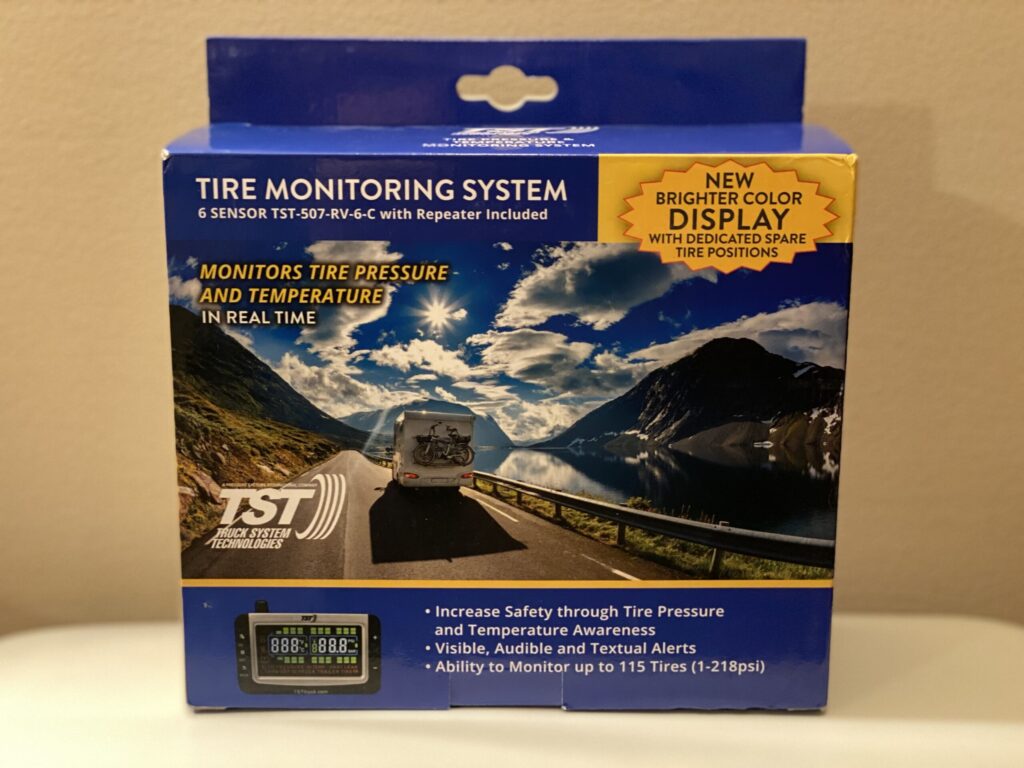
When we set out on our maiden voyage in our new Class A Motorhome last year, we emphasized to our kids that safety was “Priority 1”. We had a safety briefing before we rolled out of the neighborhood in which we reviewed emergency exits, location and tutorial of fire extinguisher, the importance of not distracting or stressing the driver, and a departure checklist (watch for a future post about our checklists). While it is difficult to rank the importance of the checklist items, there is one that I tend to stress about more than others and that is “Proper Tire Pressure”. I’ve seen terrifying photos of wreckage from RV accidents following a blow out, and I am determined to do everything in my power to avoid such a horrible tragedy. In that spirit, I would spend ~30 minutes every travel day last year ensuring correct pressure in the 6 tires of Optimus Prime (our RV) before we would depart a site in the mornings. On the best days, I would not need to add any air, and would come in to wash my hands and then hit the road. On the worst days, I would have to adjust the air in more than 1 tire and sweat through my shirt in the process thanks to the summer heat. This only further delayed our travels for the day, yet was not something we would compromise due to the safety implications. Even with that daily inconvenience, I still would stress as I was driving as I had no idea if a problem with tire pressure or temperature developed while on the road.
Fast forward 9 months and we are now planning our second month-long voyage. This year, I was determined to reduce my stress as much as possible, and thus decided to invest in a Tire Pressure Monitoring System. After a couple Google and Amazon searches, it quickly become apparent that Truck System Technologies (TST) was the de facto leader in this segment and I ordered the TST 507 with 6 cap sensors.
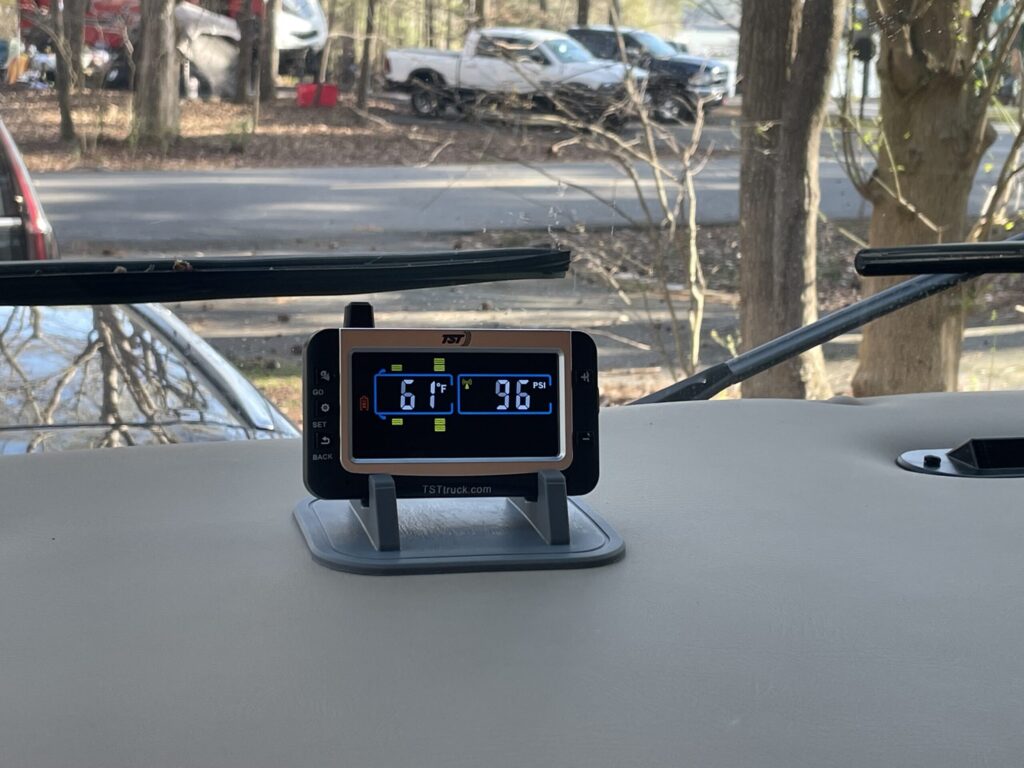
Why This Product:
The volume of reviews with positive sentiment and great details were quite convincing. I did consider other products that rely on apps on a mobile device, but decided I didn’t want to flip back and forth between my navigation and tire pressure. I liked the idea of having a dedicated monitor for the tires that is always visible and the large color display was a great selling point.

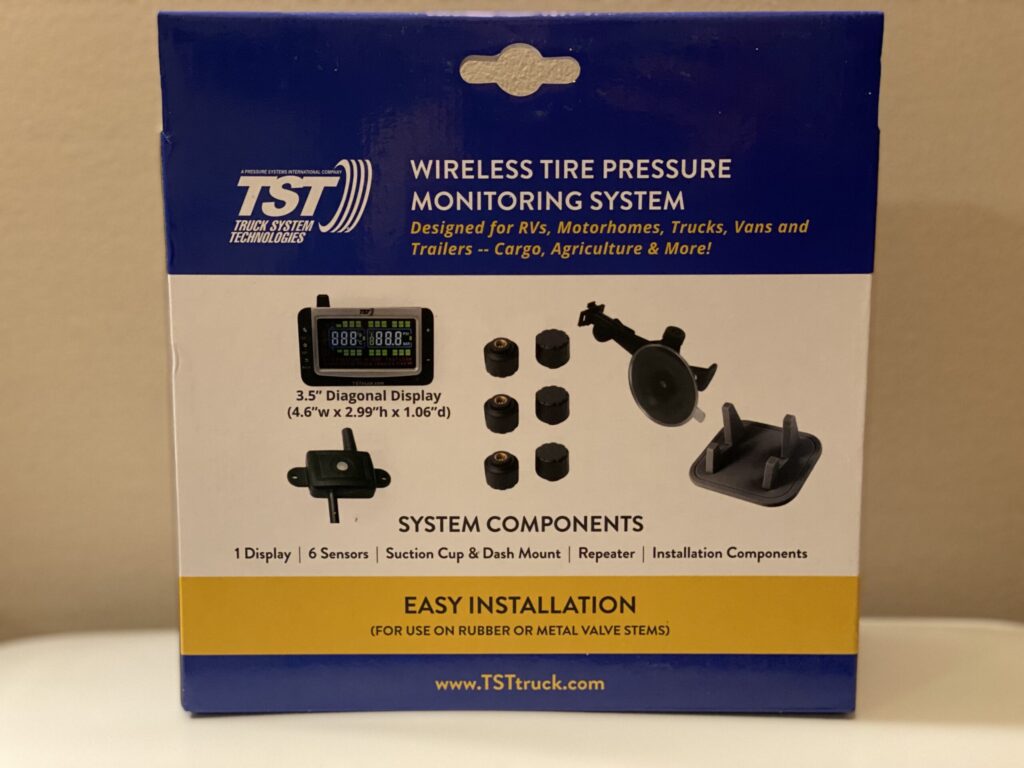
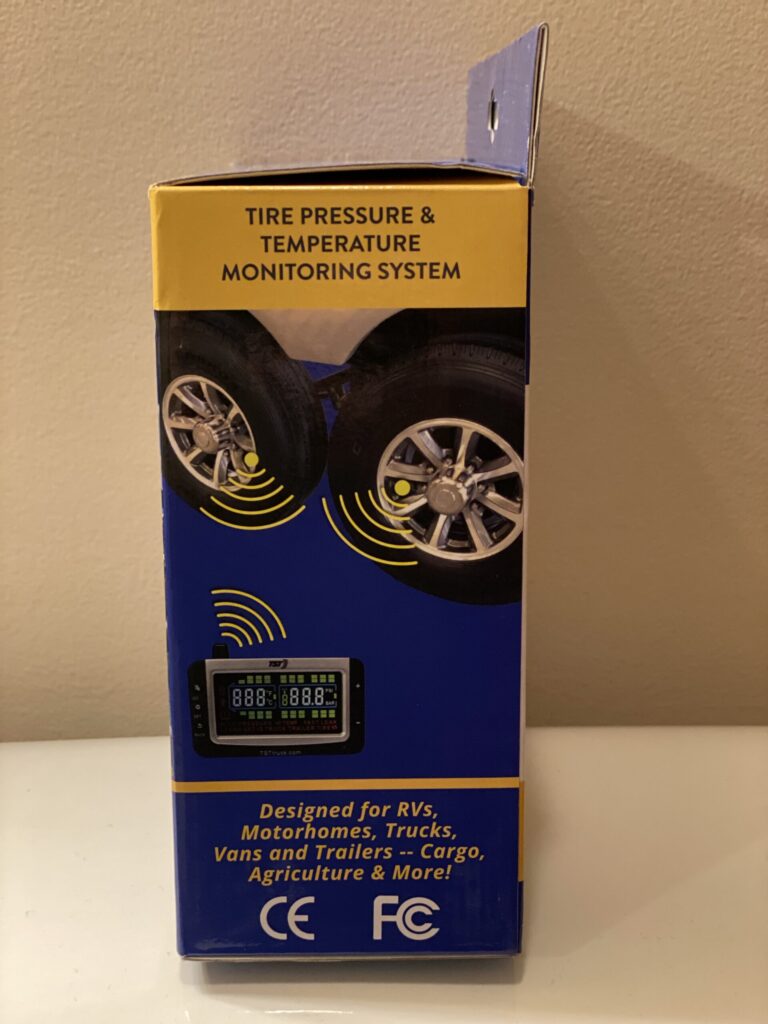
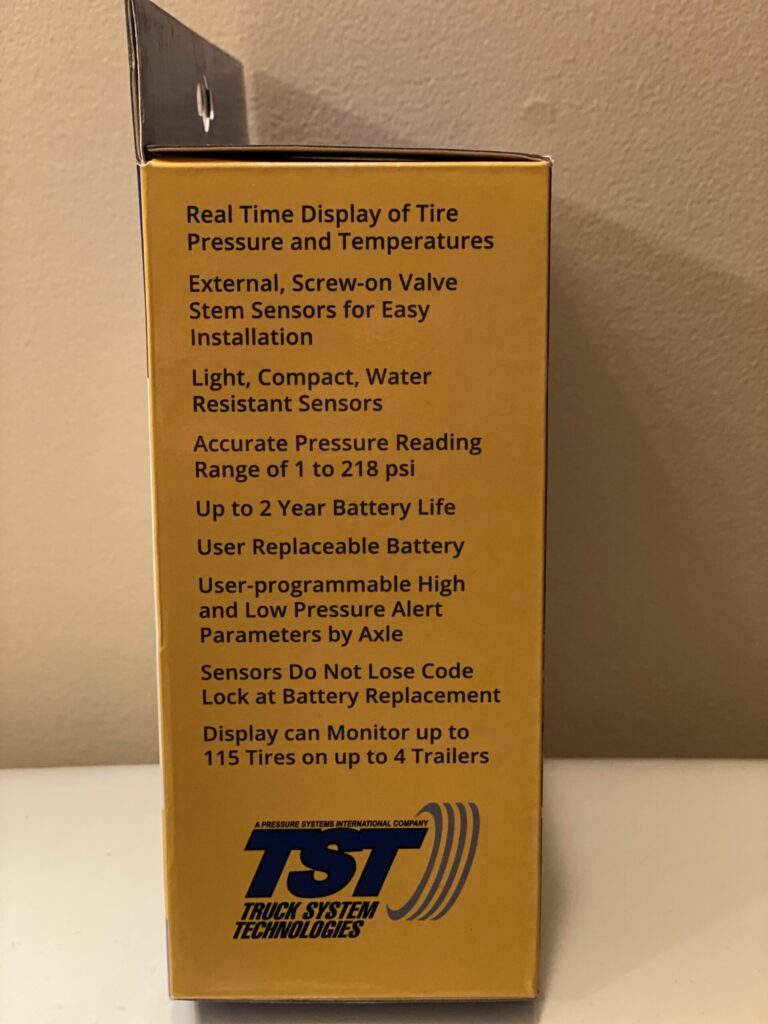
Cap Sensors vs. Flow Through Sensors: Having no experience with these products, I researched the topic on several discussion forums. From what I discovered, flow through sensors might be more convenient when needing to fill more air since they do not need to be removed. However there are several reports of them developing leaks, and reports of them taking longer to inflate through. Cap sensors just simply twist off like a traditional stem cap and seem to be more reliable based on the discussions. My impressions so far are that the cap sensors will be easy enough to work with, however they are quite bulky.
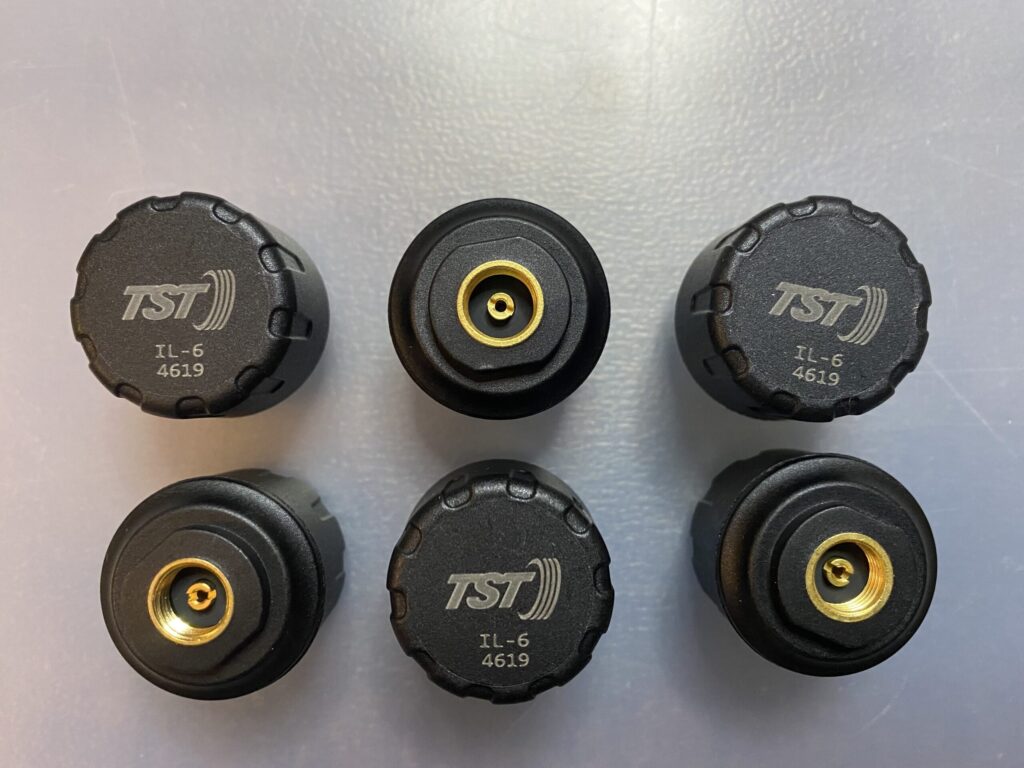
Our Review:
Readability of Monitor: While the monitor is a little smaller than I expected, the size of the information displayed is fantastic for my aging eyes. I also appreciate the color choices that TST made and have no problem reading this display from afar, even while in motion. It is also worth noting for those of you who may be colorblind that the colors are not critical for interpreting the information displayed.
Initial Setup: Being the detail-oriented guy that I am, I did read through all of the instructions before starting the setup. I then found I needed to read the quick start a second time and walk through the instructions step-by-step with the product in hand and the instructions next to me. My unit of measure preferences matched the default settings so I skipped that step. I then adjusted the upper and lower thresholds for pressure alerts following the TST guidance. Next it was time to program (or pair) the first sensor. The navigation on the monitor requires the use of the “setup” button, “go” button, and “+” button to perform this programming, however is not intuitive with on-screen instructions like we have become accustomed to in this iPhone era. In addition, there are technical codes and abbreviations displayed during setup that won’t mean much to the common RV’er. That said, once I completed the programming of the first sensor, repeating the sequence for the other five sensors was indeed easy and fairly quick despite the lack of on-screen guidance.
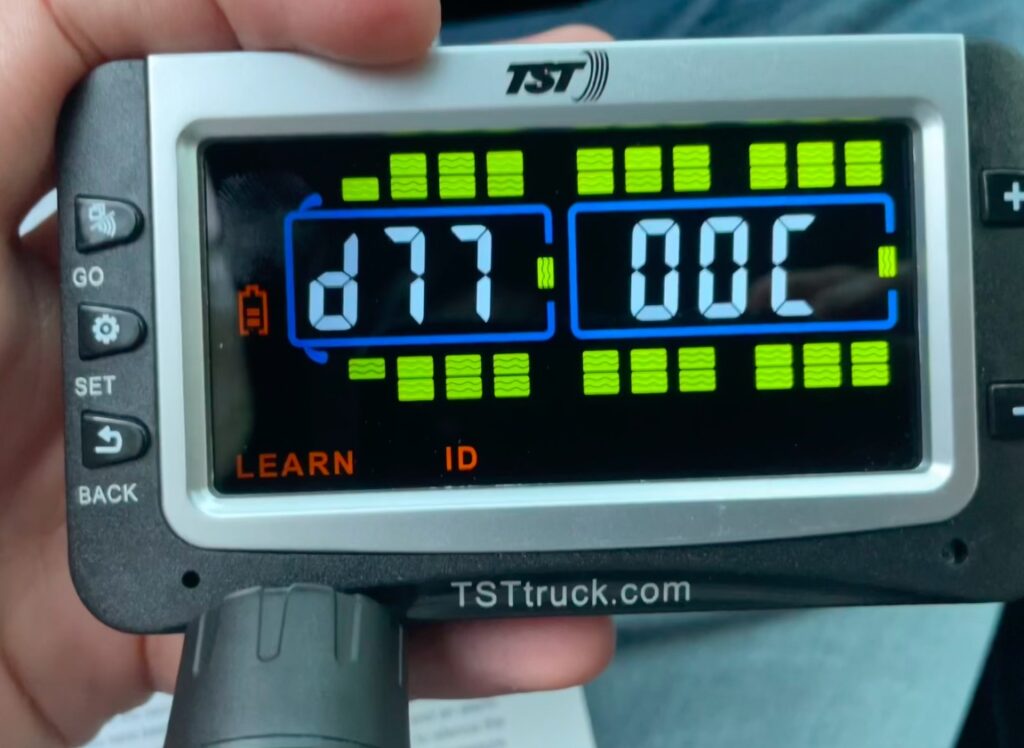
Installation: Installing the cap sensors on the tires was easy-peazy as they just screw right onto the valve stems. There is an option to use an additional washer and wrench if you would like to “secure” your caps, however if someone is really determined to steal them, they could do so with their own wrench. I consider this security setup merely a deterrent and am not yet sure if I will use this setup on our voyage.
The installation of the monitor was also straight forward and you have two options: 1. Suction mount to the glass in front of or next to you 2. Sit in a cradle on the dashboard. Either option is easy to setup and they both work well, though the cradle is not attached to your dashboard. It merely sits on the dashboard with its non-slip, rubberized texture. I consider either of these options practical and merely a personal preference.
The one piece of the installation that required slightly more handy skills was the signal repeater. In order to make sure the signals from the sensors in the back of the vehicle (or in your tow vehicle or trailer) can reach the monitor, this system comes with a signal repeater that gets installed in the back of the vehicle. It requires 12V power but is not setup with a cigarette-lighter-style plug. Rather it has a red wire and black wire that you have to connect to your 12V power source. For motorhomes, TST recommends installing the repeater in a basement bin in the back of the vehicle. I was not a fan of splicing the wiring going to my slide motors and that is the only 12V power I have readily available in those rear bins. Thus I opted instead to tap into the 12V leads that supply my carbon monoxide (CO) detector in the main bedroom. I’ve seen in the forums that some people wire the repeater directly to the coach battery. This was a bit too far forward in the vehicle for my liking. Others have wired into the 12V power of the trailer connector on the hitch. The main benefit of that approach is the repeater only comes on when the ignition is on. Let me know in the comments where you end up installing the repeater as I always enjoy learning from your creativity.
Power Requirement: The color monitor uses a built-in lithium battery and is rechargeable with a provided USB cable. There is an on-off slider switch so you can turn the display off when not in use and conserve battery. TST recommends NOT leaving the monitor plugged in constantly when the battery is fully charged as this will impact the batteries ability to fully charge and hold a charge. The cap sensors run on CR2032 batteries which are the little disc-shapes batteries we find in watches and car key fobs. They are expected to last about a year. I have not had to replace any of these batteries yet, but the process looks fairly simple with the provided wrench.
Overall Impression:
So far I’m quite happy with the TST 507 and am looking forward to our trip this summer without having to pull out a pressure gauge each and every day. The setup and installation is done. The monitor is easy to read. And we are ready for the road!
If you end up purchasing a Tire Pressure Monitoring System, we’d love to hear about your experience! Post a comment, let us know what you purchased, and how your experience has been!
Happy RV’ing!